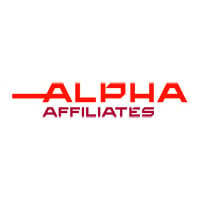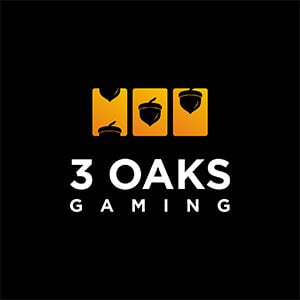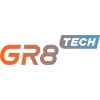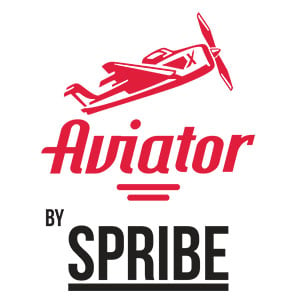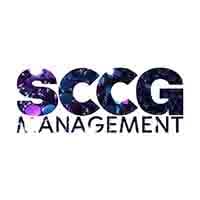eilson Hall, CEO and co-founder of Illuminate, makes the case for a credible and cost effective alternative to SEO
There’s a lot of talk about SEO, organic optimisation, link building – and rightfully so. But I thought it would be really interesting to explore how we can potentially use bought media channels to drive acquisitions and conversions.
Companies basically have three options: bought, owned and earned media. The first thing that everyone looks at is owned media. It’s the easiest way to market and you’re in complete control of your assets. One problem is risk and reward. If you’ve got a big brand name that people recognise and there’s a value associated with that, you don’t want to be doing aggressive link building that could potentially get you penalised. There’s also this misconception that it’s the cheapest traffic. The competition is seriously stiff. It’s a bit like technology – SEO is a great leveller.
I often get asked about earned media, by which I mean social media. It can be really damaging if you don’t invest in it properly and don’t have a really consistent approach to social media. The trouble I’ve got is that you can’t accurately measure – without investing a lot of money – what’s it actually driving in sales.
BOUGHT MEDIA
There’s a massive lack of knowledge about the bought media marketplace. It’s very time consuming and very complex, especially for a small organisation. But it really isn’t that difficult. The big thing that’s causing a lack of adoption is transparency. You’ve got two routes if you choose to adopt programmatic marketing. You can go with Google – they do a lot of things very well, although I personally think that their display offering is weak. Then you’ve got the other end of the spectrum such as really large platforms like Turn. There’s a huge cost barrier to entry, so unless you’re spending tens of thousands of pounds each month you won’t be able to use those kind of platforms. There’s a massive gap in the market at the moment and I think that needs to be examined.
A recent survey revealed that 28% of marketeers don’t believe programmatic marketing is appropriate for their business. That’s completely understandable – it’s because of the lack of knowledge about it. If you break that down even further, a fifth believe it’s too expensive. I think that display advertising, like every digital channel, should be tangible. I don’t see programmatic or display advertising as brand awareness, it’s purely regeneration. You can really effectively see how people are interacting with your brand, and ultimately when they’re converting.
Programmatic marketing is essentially display advertising. Display has a really bad reputation in a lot of verticals. If you’re going to buy a bed from Ikea I guarantee that for the next two weeks you’re going to see horrible adverts on every major publisher you visit, offering you the same bed you’ve probably already purchased. But there is technology than can move away from that.
A lot of people are talking about native advertising, which is contextually relevant adverts embedded within the main body of content on a publisher’s website. So moving away from the traditional banner that you’ll see at the top of a website or down the side, to really rich, engaging adverts that are smack-bang in the middle. I think this is a really good thing because we’ve been able to leverage this type of media to avoid ad-blocking. You’re basically forcing agencies and clients to make sure they’re serving up adverts that are really relevant to the target audience.
Out of all the different kinds of display advertising, we’ve found cinemagraphs work best for our clients. They’re high resolution images with a slight element of movement. They’re fantastic because they’re cheap to produce. You can do it via video or modify an existing asset to create a bit of movement. The vast majority of publishers, particularly within the gaming space, are accepting this type of advert and we’re finding that the click-through rates are huge. Our clients are using user IDs to track engagement and conversions. We’re transferring a lot of budget from SEO and PPC into this kind of media to test it.
When we do a content programme or any kind of link building now, we often use different methods to amplify content. Native advertising has been a particularly useful and effective one. We choose the publications that we’d never be able to get exposure in traditionally – for example the sports section of a daily newspaper. It’s not going to get direct SEO value but we’ve found it gets huge amounts of traffic and shares. There’s always going to be arguments as to how much value that adds to a link building campaign but our clients have seen really great results.
THE FUTURE
As for the future, my first thought is about programmatic audio. Over the years people have seen radio advertising decrease pretty significantly. We’re at a very interesting juncture where the likes of Spotify are incredibly popular but haven’t quite got the advertising right. A lot of the bigger brands aren’t doing any radio advertising effectively. It’s another form of bought media that you can do a test with and create results before it becomes hyper-commoditised and the cost significantly goes up.
You don’t need huge budgets or complex and in-depth knowledge of the subject area to try a bit of programmatic. If you get the formula right the applications are really quite vast. There’s a lot happening within the space, particularly within television marketing – use that knowledge on a smaller scale. What a lot of these larger TV broadcasters are doing is using the data they have on you and serving up relevant adverts. Budgets are obviously bigger but there are television channels where you’re not going to be spending huge amounts of money but will be able to target consumers using this methodology.
There’s also out-of-home advertising. I get really excited about this – it’s growing so fast. You see adverts on bus shelters which traditionally would be print and wouldn’t be very interchangeable or engaging. Now they’re digital and have a beacon on top, so if someone within 800 feet enters your website details, you can track it back to that particular out-of-home sign. You can inject social media channels. Again, it’s not particularly expensive.
I had a gaming client, very new to the market, who wanted to attend an industry conference but couldn’t afford the booth space. So we looked around the venue at all the digital out-of-home signage and found that there was an after party at a venue across the road that had screens for £200. So rather than spending £20,000 on a booth, we were able to hit our target audience at a location that was really relevant on an absolutely tiny budget.
A final thing is reporting. You’re doing all these fantastic things but are you really understanding and accurately measuring the value it’s giving your business? The worst thing you can do is be trying things and then stopping and not being 100% sure you’ve got the right data. There’s also attribution. When I first got involved in the ad space this cost tens of thousands of pounds and you might not be any clearer. If you look at things from a last click perspective you often get a distorted view of what’s working and what’s not. But if you effectively implement your analytics you should be able to track where that sale came from.
Neilson Hall was speaking at this year’s London Affiliate Conference
Leveraging bought media
N
By Gambling Insider
Premium+ Connections
Premium Connections
Consultancy
Awards
Executive Profiles
Mohegan Inspire
GAN
DraftKings
The Star Entertainment Group
Entain
Follow Us
Company profile: Growe Partners
Dominate the Sports Betting Affiliate Arena with Growe Partn...Company profile: GR8 Tech
The sportsbook provider discusses turning sportsbooks into a...Analysing sports betting data from the African Cup of Nations 2024
Sports betting supplier Betby provides Gambling Insider with...LiveScore Group: Football’s changing relationship with fans
Gambling Insider delves deeper into LiveScore’s Evolution...9 April, 2024
A new trend: Why are gaming companies going private?
9 April, 2024
Wazdan CEO: Engineering success in gaming
27 March, 2024
Gaming in North America: The litigation nation?
18 April, 2024
Indonesian Government to form integrated task force against online gambling
Gambling is currently illegal in Indonesia for both locals and foreign players.17 April, 2024















